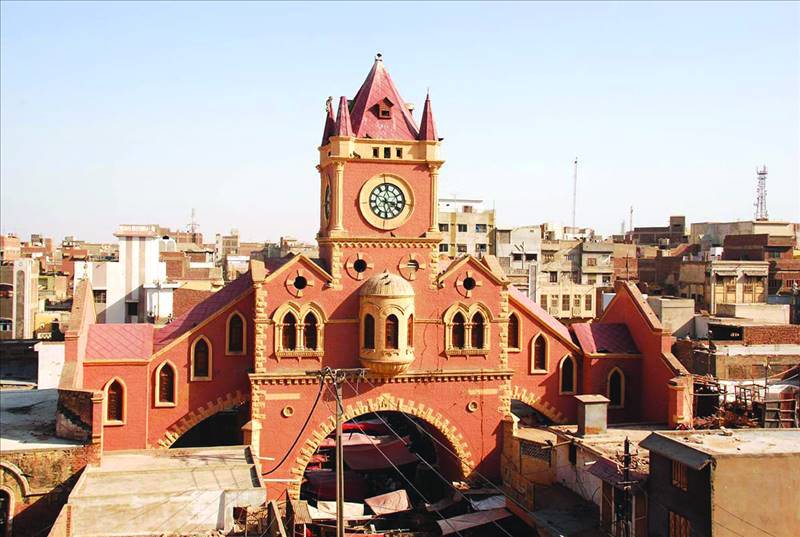
Hyderabad Tower Market is one the oldest areas of the city. Fruit and vegetable vendors and shopkeepers earn their bread and butter from dawn to dusk. People come from nearby urban areas for shopping as this is the cheapest market of the city.
Also known as the Ghanta Ghar (Clock Tower), this area is an iconic landmark of Hyderabad. But the clock has gone silent for years now. The meat market that was built beside the Ghanta Ghar is also in a crumbling condition. The ceiling is completely damaged and broken. The walls are also not in a very good condition.
The Market Clock Tower has seen its hundred years – built in 1914 well before the Partition of the Indian Subcontinent. Naval Rai was performing his duties as collector in the British Raj. And it was in honour of his services that the British administration attributed the tower to his name. The tower was designed by engineer P.C Thadani.
After 1980, even as the tower went silent, its hands were in working condition. The Citizen company from the British era planned to install such clocks in every city of Pakistan. The main purpose was to make people aware about time management and promote business activities.
“For years we have never heard its bell. I am selling meat from a young age in the meat market but I have never the tower market in such a ruined condition before this” says Said Ali Ahmed.
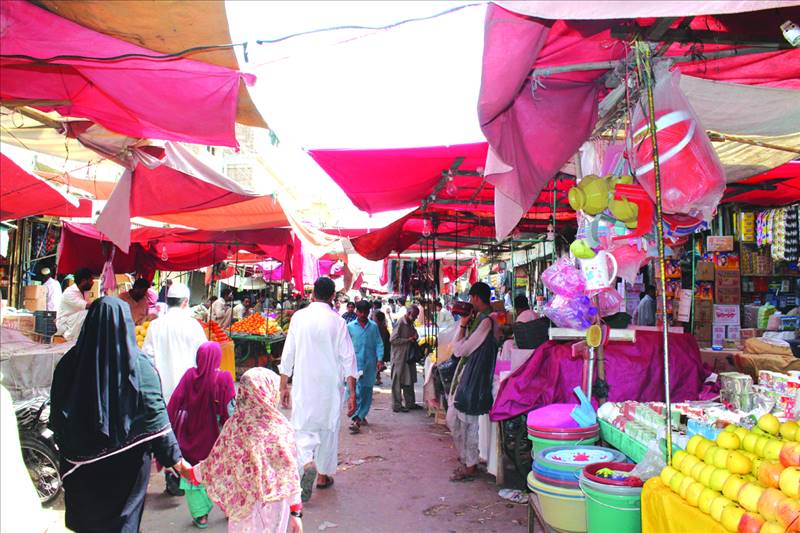
“Nobody cares about such old places and tower clocks. Now people avoid coming here for meat. Most of the butchers have left the market due to a lack of customers and facilities.”
In Gen Pervez Musharraf’s regime, the district government took efforts to renovate the tower and market area. However these were ineffective efforts and the market and clock tower were not properly renovated.
Mohsin Joyo is a writer who recalls his good old days “I have spent my childhood and youth in Hyderabad. I still miss my old Hyderabad: where, after every hour struck, I used to hear the loud sound of a bell from the clock. This is our heritage but we are neglecting it. I often come here to visit the market area but unfortunately we are wiping out our own culture and heritage.”
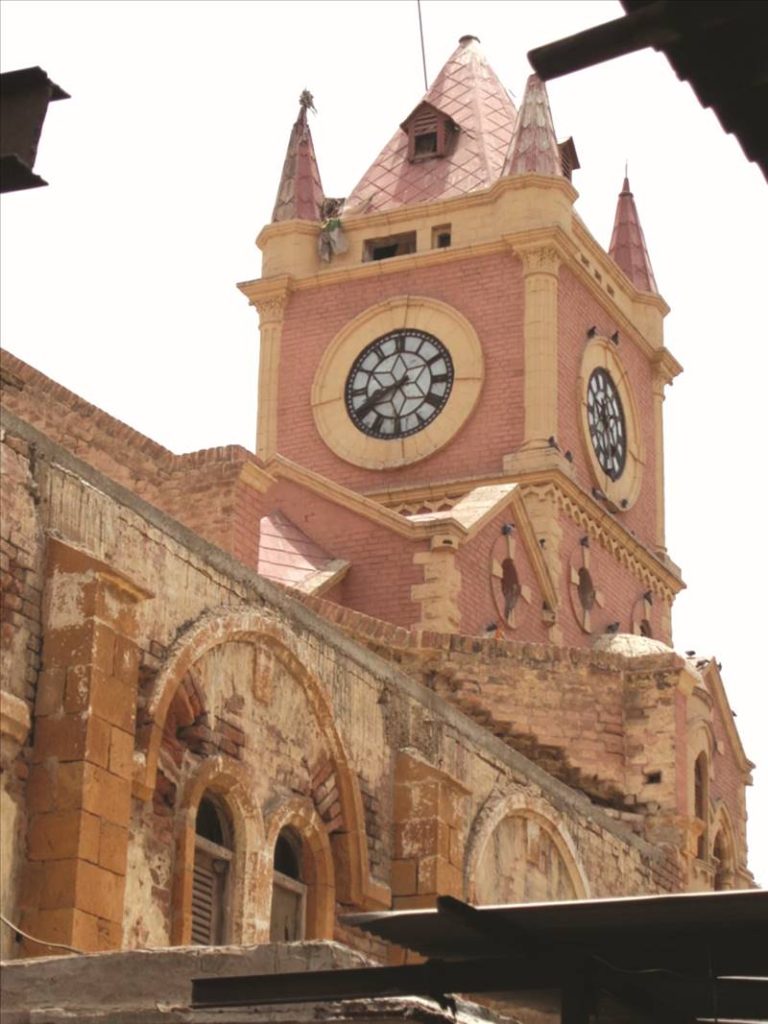
The doors of the clock tower are jammed and a municipal worker who had been appointed for the maintenance of tower often remains absent. The machinery within has been stolen many years ago, and only a symbolic clock can be seen from the roadside.
The people of Hyderabad want to see the market clock tower in a working condition but they await a time when the local government would take up the responsibility to restore some of the old charm of the market area.
From the market area, Tilak Charhi road leads to Garri Khatta, where another clock tower is installed. Fortunately it has not been neglected quite as much: as, up to the present time, it is working.
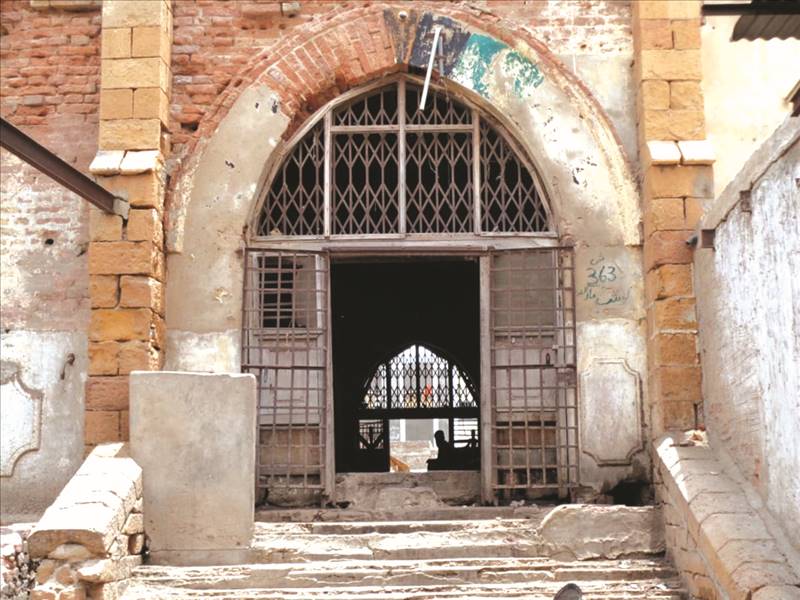
Nau Widyala (New Seminary) is the oldest education institution of Hyderabad; a red-brick building built by Rai Bahadur Pirbhdas. He was born in 1866 in Hyderabad. A progressive and enlightened man, by profession he was an engineer.
Pirbhdas wanted to make an ideal education institution in Hyderabad consequently he resigned from his job and laid the foundation of Nau Widyala in 1897. It was a co-educational school system.
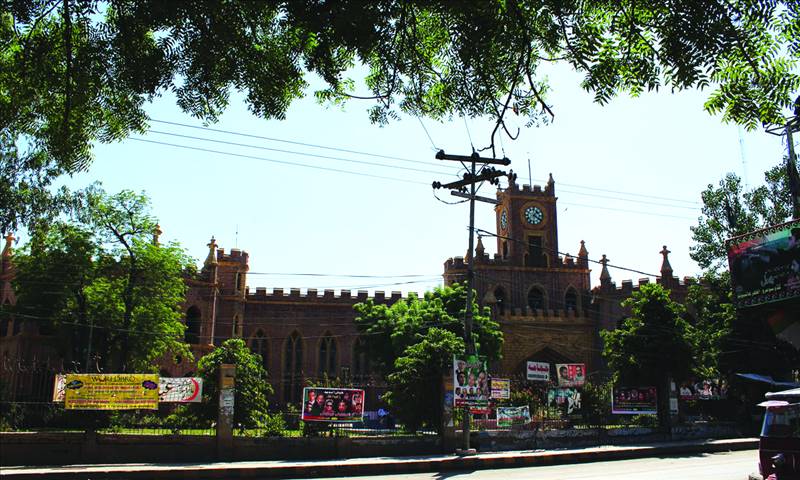
In 1951 University of Sindh was shifted from Karachi to Hyderabad. The first University campus was introduced in Nau Widyala. However, it lacked enough space: students were increasing every year and therefore the University was moved to Jamshoro in 1955. Now the campus is known as Miss Elsa Kazi campus.
Pirbhdas was a secular minded man; while designing the school building he kept the same idea in mind. The cross sign of the Christian community, a mosque and temple domes are found on top of the walls.
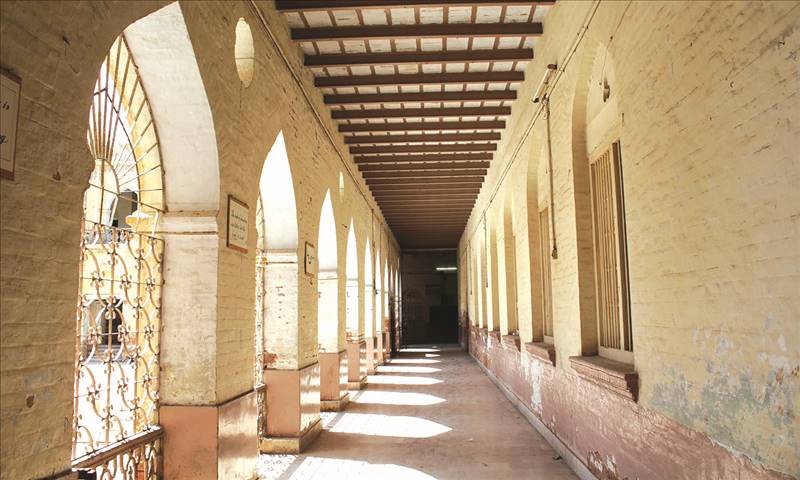
Architecturally it is very well designed and the clock tower is a prominent icon of Nau Widyala. I was pleased to see that school administration is taking care of the clock tower and it is working properly.
Pirbhdas died in 1939 at the age of 73. After his death. the school’s name was changed to N. A Baloch Model School.
“I have seen the good old times of Hyderabad. The pre-Partition city had had many beautiful buildings and much of the population was well off, so the educated Hindu class decided to make institutions for the future of upcoming generations. Today only few of them are left. Nau Widyala, Holm Stead Hall and Naval Rai School were the magnificent buildings of the city” reminsces Jhamatmal Jethanand, a senior advocate.
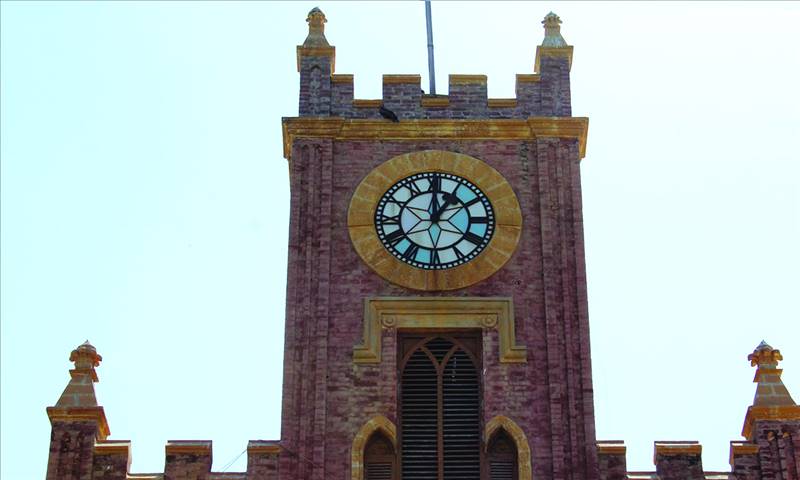
“In the name of development we have shattered the real beauty of Hyderabad. Any development which took place at the cost of our heritage is a miserable thing. Most of us blame the administration but as citizens, we ourselves do not own our city. I believe that without depending upon the administration, we should take care and preserve our old buildings to keep them in their original glory. Both clock towers were gifts for Hyderabadis.”
Pirbhdas and Naval Rai played their roles to make the city beautiful. Some people even now are keen to hear the bell of the clock tower from the market. And some demand that the name of Nau Widyala School should be restored.
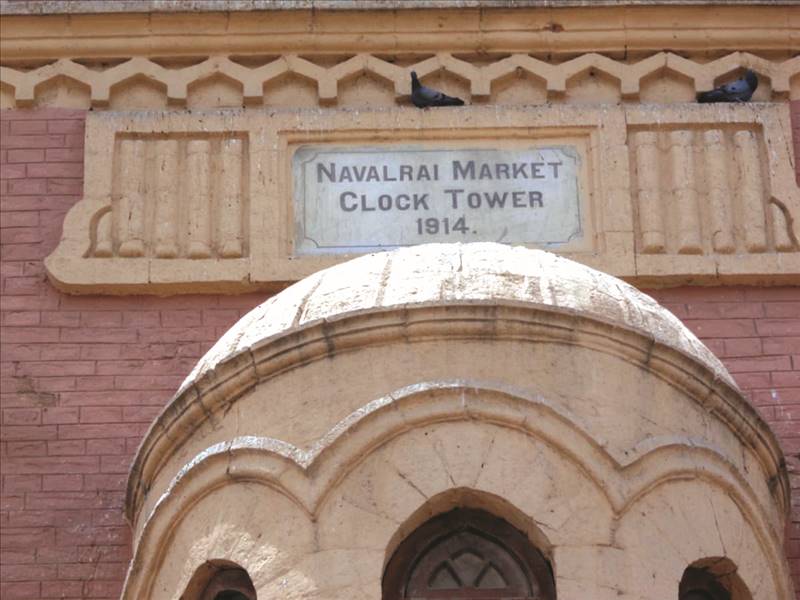
Today Hyderabad is surrounded by newly constructed plazas and malls. It is really hard to find pre-Partition constructions.
“In 1966 during our college life we used to visit these clock towers. Till now I remember that there was a bakery beside the market clock tower and our father used to ask me to deliver eggs to the bakery owner. In exchange he would give us cookies. I feel happy that some efforts are being taken by Endowment Fund Trust for the rehabilitation of these towers” says Jethanand.
Also known as the Ghanta Ghar (Clock Tower), this area is an iconic landmark of Hyderabad. But the clock has gone silent for years now. The meat market that was built beside the Ghanta Ghar is also in a crumbling condition. The ceiling is completely damaged and broken. The walls are also not in a very good condition.
The Market Clock Tower has seen its hundred years – built in 1914 well before the Partition of the Indian Subcontinent. Naval Rai was performing his duties as collector in the British Raj. And it was in honour of his services that the British administration attributed the tower to his name. The tower was designed by engineer P.C Thadani.
The machinery within has been stolen many years ago, and only a symbolic clock can be seen from the roadside
After 1980, even as the tower went silent, its hands were in working condition. The Citizen company from the British era planned to install such clocks in every city of Pakistan. The main purpose was to make people aware about time management and promote business activities.
“For years we have never heard its bell. I am selling meat from a young age in the meat market but I have never the tower market in such a ruined condition before this” says Said Ali Ahmed.

“Nobody cares about such old places and tower clocks. Now people avoid coming here for meat. Most of the butchers have left the market due to a lack of customers and facilities.”
In Gen Pervez Musharraf’s regime, the district government took efforts to renovate the tower and market area. However these were ineffective efforts and the market and clock tower were not properly renovated.
Mohsin Joyo is a writer who recalls his good old days “I have spent my childhood and youth in Hyderabad. I still miss my old Hyderabad: where, after every hour struck, I used to hear the loud sound of a bell from the clock. This is our heritage but we are neglecting it. I often come here to visit the market area but unfortunately we are wiping out our own culture and heritage.”

The doors of the clock tower are jammed and a municipal worker who had been appointed for the maintenance of tower often remains absent. The machinery within has been stolen many years ago, and only a symbolic clock can be seen from the roadside.
The people of Hyderabad want to see the market clock tower in a working condition but they await a time when the local government would take up the responsibility to restore some of the old charm of the market area.
From the market area, Tilak Charhi road leads to Garri Khatta, where another clock tower is installed. Fortunately it has not been neglected quite as much: as, up to the present time, it is working.

Nau Widyala (New Seminary) is the oldest education institution of Hyderabad; a red-brick building built by Rai Bahadur Pirbhdas. He was born in 1866 in Hyderabad. A progressive and enlightened man, by profession he was an engineer.
Today Hyderabad is surrounded by newly constructed plazas and malls. It is really hard to find pre-Partition constructions
Pirbhdas wanted to make an ideal education institution in Hyderabad consequently he resigned from his job and laid the foundation of Nau Widyala in 1897. It was a co-educational school system.

In 1951 University of Sindh was shifted from Karachi to Hyderabad. The first University campus was introduced in Nau Widyala. However, it lacked enough space: students were increasing every year and therefore the University was moved to Jamshoro in 1955. Now the campus is known as Miss Elsa Kazi campus.
Pirbhdas was a secular minded man; while designing the school building he kept the same idea in mind. The cross sign of the Christian community, a mosque and temple domes are found on top of the walls.

Architecturally it is very well designed and the clock tower is a prominent icon of Nau Widyala. I was pleased to see that school administration is taking care of the clock tower and it is working properly.
Pirbhdas died in 1939 at the age of 73. After his death. the school’s name was changed to N. A Baloch Model School.
“I have seen the good old times of Hyderabad. The pre-Partition city had had many beautiful buildings and much of the population was well off, so the educated Hindu class decided to make institutions for the future of upcoming generations. Today only few of them are left. Nau Widyala, Holm Stead Hall and Naval Rai School were the magnificent buildings of the city” reminsces Jhamatmal Jethanand, a senior advocate.

“In the name of development we have shattered the real beauty of Hyderabad. Any development which took place at the cost of our heritage is a miserable thing. Most of us blame the administration but as citizens, we ourselves do not own our city. I believe that without depending upon the administration, we should take care and preserve our old buildings to keep them in their original glory. Both clock towers were gifts for Hyderabadis.”
Pirbhdas and Naval Rai played their roles to make the city beautiful. Some people even now are keen to hear the bell of the clock tower from the market. And some demand that the name of Nau Widyala School should be restored.

Today Hyderabad is surrounded by newly constructed plazas and malls. It is really hard to find pre-Partition constructions.
“In 1966 during our college life we used to visit these clock towers. Till now I remember that there was a bakery beside the market clock tower and our father used to ask me to deliver eggs to the bakery owner. In exchange he would give us cookies. I feel happy that some efforts are being taken by Endowment Fund Trust for the rehabilitation of these towers” says Jethanand.

